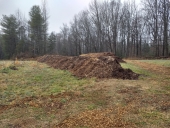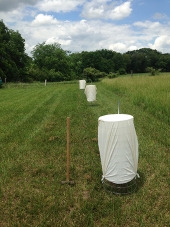





Dave de Basque wrote:
Wow, what a recipe, Brad! That stuff must be dynamite! I am not set up too well to try that out now but I definitely plan to later. With the added advantage that coffee grounds keep snails and slugs at bay. And something better to do with grass clippings, keeping it from going anaerobic easily. Genius.
Sugar sand -- that is a derivative of the maple sugaring process? Any substitutes possible for the unfortunate sods that don't live in Vermont or Quebec?

Dave de Basque wrote:A big pile of fresh grass clippings is loaded with nitrogen and will turn into a hot pile of slimy sludge in no time flat. Maybe let it start to decompose a bit, but not completely, and then put some around each plant?
And I don't think maybe 10:1 dilute urine will hurt at all actually. It's sterile when it comes out, and nature has a long time to transform it into a lot of different things before you harvest -- that's a long time off!
Just the thoughts off the top of my head.

carlson yeung wrote:It would be really nice if I had red wigglers running all over my garden. I'm told it can't be done because they're composting worms. Then I thought... wait a minute! They were around long before humans began officially composting in bins.
One person advises that red wigglers won't survive winter here. But, another tells me that their eggs will overwinter and I'll have a new batch of baby worms come spring. So, nature has taken care of that part. Then I'm told that they eat food scraps and not decayed material in the soil, so they will starve to death if not in a compost bin. But another one tells me that's ok too, because they also eat decaying wood particles, compost and manure in my soil, and the decaying woodchip mulch in my pathways.
The soil sucks, because I just bought it and put it into my freshly built raised beds last month. It appears to be a mix of sand, manure, and wood fines. The wood mulch in the pathways is actually playground wood chips (softwood with no bark) because I couldn't get arborist wood chips. In another month, my plants will be big enough that I can start chopping and dropping leaves to mulch the raised beds.
Does a permie have a definitive answer to the question: Should I buy Red Wigglers to populate my raised bed garden?
thank you

John Saltveit wrote:Brad,
This is my experience. I have several that I have planted from seed, in partial shade. They grow and as they get bigger, they will be in full sun and produce fruit. We have bone dry summers, so some deep watering is necessary, as they come from humid and rainy summer areas like US South and Midwest.
John S
PDX OR

May Ree wrote:We are also planning on Paw Paws for the spring, and I understand that they need shade when smaller, but am confused about how much sun they eventually need. Can they be productive in partial shade as mature trees?


